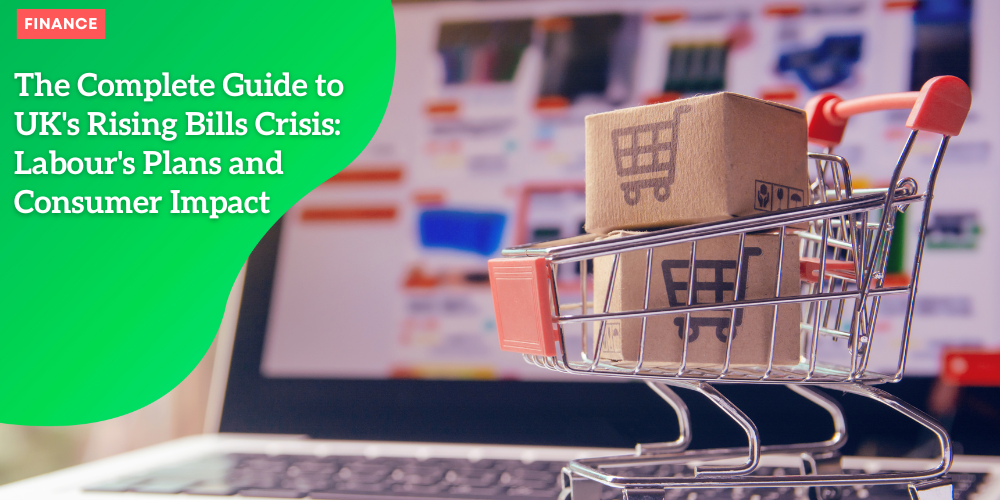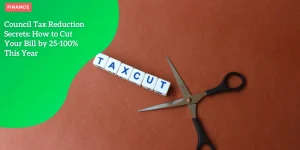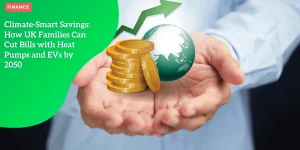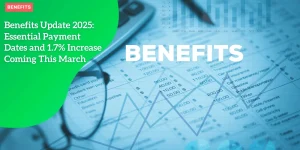The Complete Guide to UK’s Rising Bills Crisis: Labour’s Plans and Consumer Impact

Anúncios
Understanding the Current Crisis
April 2025 marks a significant turning point for households across the UK, with a notable increase in bills impacting many.
In this chapter, we will delve into the specifics of these increases and their broader economic implications.
Anúncios
Overview of the Significant Household Bill Increases from April 2025
The coming months will see a sharp rise in essential household expenses, notably affecting council tax, water bills, and energy costs.
This surge is poised to intensify the economic strain that many families are already experiencing. Here are the key increases:
Anúncios
- ✅Council Tax: Set to rise by 4.99% in 2025-26, this will push the average bill notably higher. The cumulative effect of these incremental increases cannot be underestimated as they significantly weigh on household budgets.
- ✅Water Bills: Households will witness a steep climb in water bills, averaging an additional £123 per year. This 20% increase is one of the highest in recent years and poses a substantial financial burden.
- ✅Energy Costs: Gas and electricity bills are expected to rise by an average of £111. With energy already a major expense for most households, this increase is set to exacerbate the financial strain on many families.
Impact on Inflation Rates and Economic Recovery
These surges in household costs are not just a financial inconvenience; they have far-reaching implications for the broader economy.
According to Analysts, inflation, which had shown signs of easing, is predicted to rebound to 3.7% by late summer 2025.
This persistent inflation, higher than in the EU, complicates the UK’s economic recovery efforts.
High inflation coupled with sticky interest rates is likely to:
- ✅Reduce Consumer Spending: Families will become more cautious, cutting back on non-essential purchases and big-ticket items. This reluctance can be seen in sectors like home renovations and luxury goods, which have already started to feel the crunch.
- ✅Prolong Economic Stagnation: The UK’s heavy reliance on consumer spending means that reduced expenditures can extend economic stagnation. A slow recovery trajectory may lead to a prolonged period of stagflation, where both inflation and stagnant growth co-exist.
- ✅Increase Public Finance Challenges: The public sector is not immune to these pressures. Fiscal policies, such as those in Rachel Reeves’ budget, necessitate £14bn in savings. This introduction of austerity measures could add further discomfort to consumers already battling high living costs.
These adjustments raise concerns about the resilience and stability of the UK’s economic landscape.
Ensuring that households can weather this storm and maintain financial stability is essential for long-term growth and recovery.
Next, we will explore how these economic pressures uniquely affect different income groups, particularly focusing on low-income households and the ‘squeezed middle.’

The Impact on Different Income Groups
Affecting the UK’s Poorest Households
The UK’s poorest households are facing a significant financial strain due to the steep increases in household bills set to take effect from April 2025.
This surge includes higher costs for council tax, water, and energy.
These households, already struggling with limited incomes, will find it challenging to absorb these additional expenses, pushing many further into poverty.
Inflation, predicted to climb back to 3.7% by late summer, exacerbates the situation.
The rising costs reduce the purchasing power of these households, impacting their ability to afford essentials.
The government’s fiscal policies, while aimed at managing broader economic issues, do not seem to alleviate the immediate pressures on these vulnerable groups.
The ‘Squeezed Middle’ and Financial Challenges
Often referred to as the ‘squeezed middle,’ middle-income earners are experiencing substantial financial challenges.
This group, which includes many working families, is not only affected by the direct increases in bills but also by the broader economic stagnation and inflation.
The post-pandemic recovery has been slower than anticipated, and these households are feeling the squeeze from both ends.
Energy and utility costs have seen significant jumps, with water bills alone surging by an average of £123 a year.
Gas and electricity bills are expected to go up by an average of £111.
This adds to the burden of council tax, which is projected to rise almost 5%.
For the ‘squeezed middle,’ these increases mean juggling tighter budgets and potentially cutting down on non-essential expenditures.
Changes in Consumer Spending Patterns
The financial pressures faced by both the poorest households and the ‘squeezed middle’ are reflected in their changing spending patterns.
Consumer surveys indicate a growing reluctance to make major purchases.
Items such as sofas, new kitchens, and other big-ticket products are seeing a drop in sales as households tighten their belts.
This hesitancy to spend is likely to persist in the face of continuous high essential costs.
The direct debits for utilities and other necessities rising sharp are a constant reminder for families to economize.
As disposable income shrinks, the broader economy, heavily reliant on consumer spending, may see prolonged periods of stagnation and low growth, complicating recovery efforts.
These combined factors create a challenging landscape, one where managing immediate financial pressures and planning for future stability becomes increasingly complex.
Government Response and Budget Implications
Rachel Reeves’ Budget Measures and £14bn Savings Plan
Amid escalating household bills and economic challenges, Chancellor Rachel Reeves unveiled a £14bn savings plan to stabilize public finances.
This budget aims to balance the need for economic stimulation while addressing immediate and future financial strains on the UK economy.
Reeves emphasized that her plan would minimize the impact on benefit claimants and public services.
However, the underlying tension in public finances has cast doubts on the effectiveness of these measures in alleviating the financial burdens faced by low- and middle-income households.
Public Finance Challenges and Global Market Uncertainties
The UK’s economic landscape continues to be shaped by persistent global uncertainties.
The aftershocks of the COVID-19 pandemic, combined with geopolitical tensions and fluctuations in international markets, remain significant.
These factors have contributed to an environment of sticky inflation, defying the downward trend seen in many parts of the EU.
For the UK, this means that inflation rates are expected to remain elevated, complicating both fiscal and monetary policy.
This persistent inflation puts additional strain on public finances as the cost of servicing the national debt increases.
Treasury Considerations for Potential Autumn Tax Increases
Given the ongoing economic pressures, the Treasury is exploring the possibility of introducing tax increases in the autumn.
With the risk of high debt financing costs and the need for additional revenue, these measures are being considered to ensure long-term fiscal stability.
Potential tax hikes would likely aim to bridge budgetary gaps and counterbalance the enduring economic stagnation.
The introduction of these taxes could bear significant implications for consumer confidence and spending habits, potentially exacerbating the existing reluctance among households to make major purchases.
As the government grapples with these fiscal challenges, attention is now turning toward the broader economic implications, particularly concerning the housing market and mortgage rates.
Housing Market and Mortgage Concerns
Impact of Sustained High Interest Rates on Mortgage Rates
The sustained high interest rates have significantly affected mortgage rates in the UK.
Over the past few years, fixed mortgage rates saw a decrease, but in recent times, they have remained static.
This stagnation means potential homeowners are faced with higher monthly repayment costs than they might have anticipated a few years ago.
As a result, fewer households are taking the plunge into homeownership, preferring to wait until interest rates drop to more affordable levels.
High interest rates make it more expensive for banks to lend money, and these costs are passed on to borrowers in the form of higher mortgage rates.
This situation compresses the affordability of mortgages, further discouraging new entrants into the housing market.
Stagnation in Property Sales and Wider Economic Implications
The housing market is a significant driver of the economy, with many industries connected to property sales, such as construction, furniture sales, and home improvement services.
The stagnation in property sales due to high interest rates has a cascading effect on these related sectors.
With fewer people buying homes, there is a notable decline in consumer spending on household items for newly purchased properties.
This leads to a reduction in demand for goods and services, propelling a broader economic stagnation.
In essence, when the housing market slows down, it drags other segments of the economy down with it.
Additionally, prolonged stagnation can exacerbate the issue by keeping inflation rates elevated.
High inflation, in turn, sustains high interest rates, creating a vicious cycle that makes economic recovery more challenging.
Challenges for New Homebuyers and Existing Mortgage Holders
For new homebuyers, the high interest environment is a daunting obstacle.
Affording a mortgage has become increasingly difficult, compelling many to either postpone their plans to buy a home or seek alternative financial arrangements.
This predicament is particularly challenging for first-time buyers who may not have the equity or financial flexibility to absorb the additional costs.
Existing mortgage holders are not immune to these difficulties either.
Many are reaching the end of their fixed-rate periods and are faced with substantial increases in their monthly repayments when they transition to current, higher interest rates.
This situation may cause financial strain, with some homeowners even risking default.
The overall scenario paints a troubling picture for all those involved in the housing market.
Without significant policy changes or unexpected decreases in global interest rates, households and the broader economy will continue to feel the pinch.
The complexity of these issues highlights the urgency for comprehensive solutions to safeguard household finances and stimulate economic growth.
Labour’s Proposed Solutions
Ed Miliband’s Renewable Energy Initiative
Ed Miliband’s renewable energy initiative is a cornerstone of Labour’s strategy to address the rising household bills crisis.
By transitioning the UK from reliance on fossil fuels to renewable energy sources like wind, solar, and hydro power, Miliband aims to reduce energy costs in the long term.
The initiative promises substantial benefits for future generations, even though the immediate impact on consumer bills might not be evident right away.
One of the primary goals is to make the production of electricity cheaper within the next decade.
As renewable energy technologies become more efficient and widespread, the cost savings could be passed on to consumers, potentially leading to lower energy bills.
This shift would also help the UK meet its environmental targets, further aligning economic needs with ecological sustainability.
Jonathan Reynolds’ Efforts on Export Tariffs
While Miliband focuses on long-term energy solutions, Jonathan Reynolds, the business secretary, is tackling immediate economic challenges by working diligently to prevent costly export tariffs on UK goods.
These tariffs could exacerbate inflation and increase prices for consumers across the board.
By negotiating favorable trade terms, Reynolds aims to bolster the UK’s economy and keep prices stable for essential goods.
Reynolds’ efforts are especially crucial for an open, trading nation like the UK.
By mitigating the risk of escalated trade costs, he hopes to support both businesses and consumers, preventing further financial strain that could come from higher import prices and disrupted supply chains.
Strategies to Protect Households from Future Inflation Spikes
Labour’s strategy also includes various measures to shield households from potential future inflation spikes.
These strategies aim to create sustainable economic conditions that would prevent sharp increases in the cost of living.
Some key approaches include:
- ✅Investing in Infrastructure: By improving public infrastructure, Labour aims to stimulate economic growth and create jobs, which can help offset inflationary pressures.
- ✅Supporting Local Businesses: Initiatives to support small and medium-sized enterprises (SMEs) can enhance economic resilience and create more opportunities for individuals to sustain their livelihoods.
- ✅Strengthening Social Safety Nets: Expanding social safety programs ensures that vulnerable populations receive adequate support during economic downturns, mitigating the adverse effects of inflation.
These collective efforts by Labour are designed to both address immediate fiscal challenges and lay the groundwork for a more stable and prosperous economic future.
By focusing on renewable energy, reducing trade barriers, and implementing protective measures against inflation, Labour aims to create a robust and sustainable economic environment for all UK households.
As we consider these potential solutions, it’s important to recognize the broader economic outlook and the scenarios that may unfold in the coming years without explicitly previewing the next chapter.
Future Economic Outlook
Predictions for Inflation and Interest Rates Through 2025
As we look ahead, the UK is poised to face significant economic challenges throughout 2025, partly due to sticky inflation rates.
Despite a brief dip in inflation earlier this year, forecasts suggest a rebound to 3.7% by late summer.
This sustained inflation is expected to keep interest rates high, impacting borrowing costs for consumers and businesses alike.
The Bank of England’s tentative approach to rate cuts—having only reduced rates once from 4.75% to 4.5% so far—indicates that there might be limited relief in the near term.
Analysts predict only one additional rate cut in 2025, which is unlikely to significantly ease the financial burden on households and mortgage holders.
| Scenario | Description | Outlook |
|---|---|---|
| 🌟 Best-case Scenario | The UK economy sees steady recovery, with consumer spending and strong sector performance (technology & services). Renewable energy initiatives begin to reduce energy costs. | Positive growth with long-term sustainability, supported by government measures and innovation. |
| ⚖️ Base-case Scenario | Moderate economic growth with persistent inflation. Consumer spending remains cautious, influenced by high household bills and interest rate uncertainties. | Growth is slower, with challenges ahead for both consumers and businesses. Government intervention may be necessary, potentially increasing taxes. |
| ⚠️ Worst-case Scenario | The UK enters stagflation, with stagnant growth and high inflation. Consumer and business confidence collapse, reducing investment and spending. Austerity measures may follow. | Negative outlook with possible long-term challenges, requiring drastic measures to stabilize the economy. |
Long-term Implications for Household Finances and Living Standards
Regardless of the scenario, the long-term implications for household finances and living standards are significant.
High inflation and interest rates will continue to squeeze household budgets, particularly for those on low and middle incomes.
Essential costs like utility bills and council taxes are set to rise sharply, putting additional pressure on family finances.
The reluctance to spend on big-ticket items, such as new kitchens or sofas, is likely to persist, contributing to a subdued economic environment.
As a result, many households may face difficult decisions about budgeting and spending priorities, further affecting overall economic growth.
The economic outlook remains uncertain, highlighting the importance of comprehensive, proactive measures to support both immediate financial relief and long-term economic stability.
Looking ahead, continued efforts to manage inflation and interest rates will be crucial in shaping the economic landscape for 2025 and beyond.






